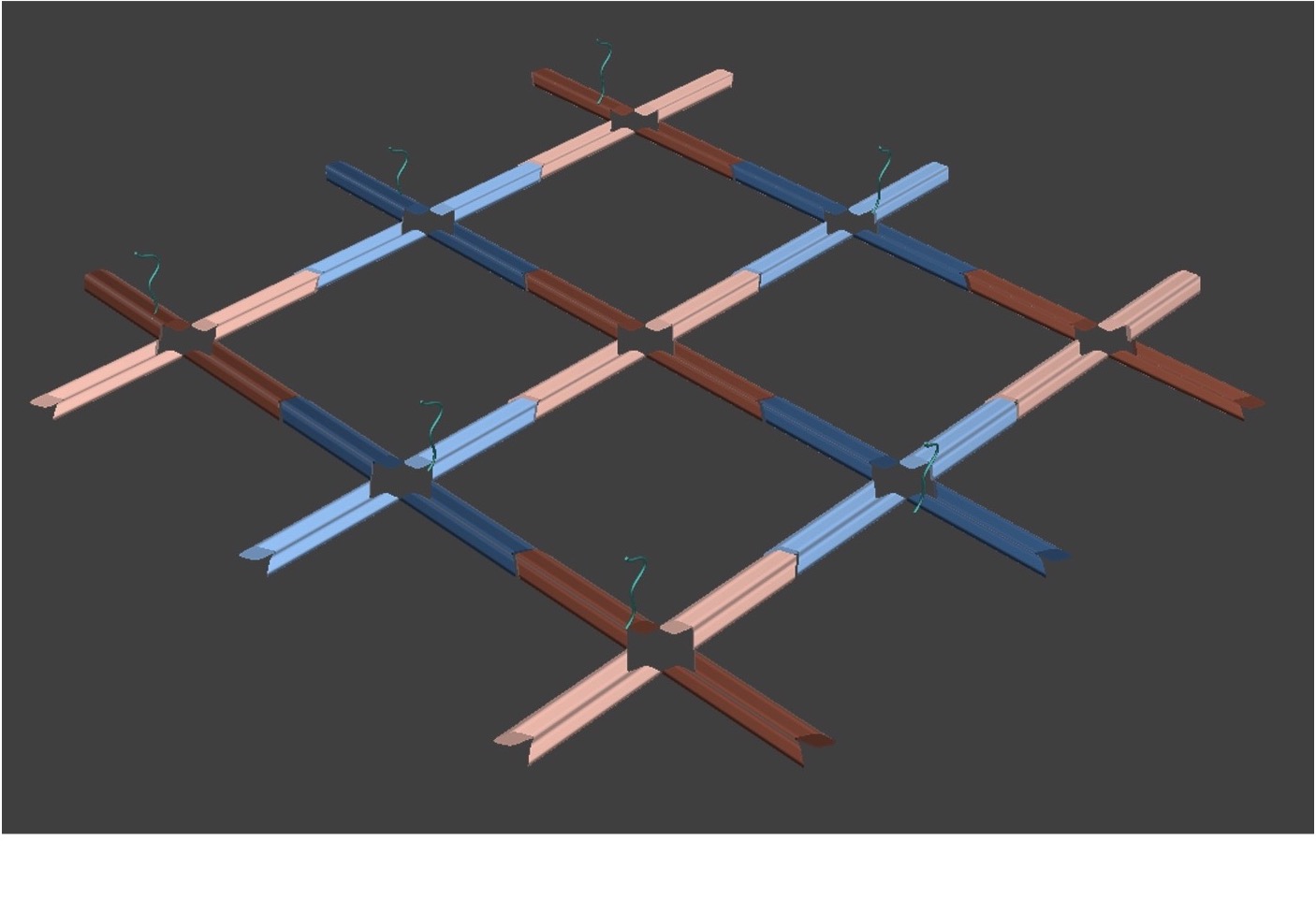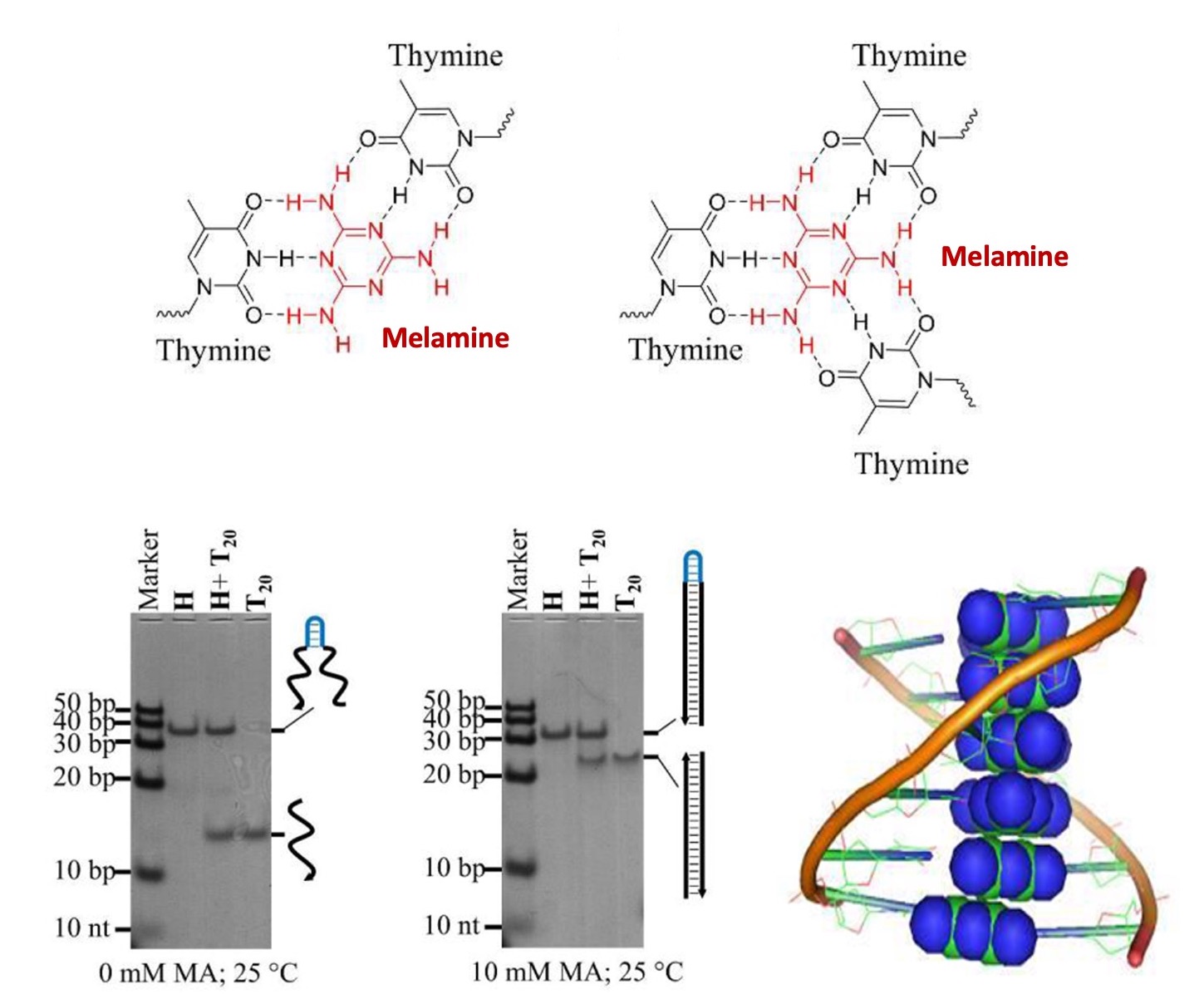
Assembly of DNA nanostructure
PhD student working on DNA nanostructuring
 Sometimes, the most interesting discoveries and elegant experiments in science are driven by simple curiosity. We think of DNA as a molecule that is highly predictable; guanine (G) pairs with cytosine (C) while adenine (A) pairs with thymine (T), and the whole thing forms a single long helical strand. How useful. How boring. But, luckily, just as there is more than one kind of pizza, there are multiple forms of DNA. Different amounts of salt, different pH, and even different orders of bases and strand combinations can make DNA take on a variety of different forms and shapes. So, just how many are there?
Sometimes, the most interesting discoveries and elegant experiments in science are driven by simple curiosity. We think of DNA as a molecule that is highly predictable; guanine (G) pairs with cytosine (C) while adenine (A) pairs with thymine (T), and the whole thing forms a single long helical strand. How useful. How boring. But, luckily, just as there is more than one kind of pizza, there are multiple forms of DNA. Different amounts of salt, different pH, and even different orders of bases and strand combinations can make DNA take on a variety of different forms and shapes. So, just how many are there?
It had been shown that, when introduced to a system containing strands with many consecutive adenine bases, cyanuric acid pairs with the adenine much in the same way that thymine does. However, because this acid has three thymine-like sides, it was found that it induced the strands to form into triplexes held together in a rosette.[1]
 What about melamine: a three-faced molecule similar to cyanuric acid is known to bind to understood thymine bases. But, added to the solution of long DNA containing consecutive thymine bases, would melamine addition lead to formation of double or triple helix? Simple question driven by curiosity.
What about melamine: a three-faced molecule similar to cyanuric acid is known to bind to understood thymine bases. But, added to the solution of long DNA containing consecutive thymine bases, would melamine addition lead to formation of double or triple helix? Simple question driven by curiosity.
In 2019, an international team of scientists set out to to answer this question and they did it with a set of elegant experiments.[2} Once having established that melamine does in fact bind to thymine-rich DNA (T20) they built a specialty thymine-rich DNA strand containing a short hairpin loop in the middle they named H. Mixing and comparing the H strand with strands without the hairpin (T20) and in absence of melamine, they could decipher the melamine role using simple gel electrophoresis. If triple helix were formed, this would be confirmed by formation of a new band on a gel different from that of the hairpin containing strands alone. The absence of such structure indicated that only double helix was formed. Additionally, the hairpin moved further in gel when in presence of melamine indicating that not only the structure was a duplex, but also that the DNA strands were antiparallel, facing in opposite directions. Such an orientation additionally hinted that instead of DNA interacting with itself, melamine is forming a central column around which thymine bases of the DNA wrapping creating a spiral. A totally new structural form of DNA has been discovered. And who says one needs fancy equipment to create new DNA nanostructures?
 As with any new structures, we like to know what could we do with it and how does it behave. Patterned multi-molecular assemblies are very popular in nanotechnology. As this new DNA-structure was highly selective for thymine, it was possible to create small tiles with short free thymine tails. The addition of melamine to these tiles faciliatete inter-tile interaction, resulting in the formation of large and regular patterns on the surface. Interestingly, altering the shape of the tile led to the corresponding changes in the pattern’s shape. Such an adaptable behaviour of nanostructures illustrates how a molecular behaviour discovery can lead to nanoengineering breakthroughs and underscores the importance of asking the right questions.
As with any new structures, we like to know what could we do with it and how does it behave. Patterned multi-molecular assemblies are very popular in nanotechnology. As this new DNA-structure was highly selective for thymine, it was possible to create small tiles with short free thymine tails. The addition of melamine to these tiles faciliatete inter-tile interaction, resulting in the formation of large and regular patterns on the surface. Interestingly, altering the shape of the tile led to the corresponding changes in the pattern’s shape. Such an adaptable behaviour of nanostructures illustrates how a molecular behaviour discovery can lead to nanoengineering breakthroughs and underscores the importance of asking the right questions.
We do not know yet just how many forms of DNA there are, or could be, what properties and functions they could have, or what could we do with them. But, that is the beauty and excitement about DNA nanotechnology and Nature; there is lots to uncover and a whole new universe of patterns to explore. So, go ahead: be curious and put something new onto your (DNA) pizza.
References
[1] N.Avakyon et al, Nat. Chem. 2016
[2] Q.Li et al, Nat. Mater. 2020